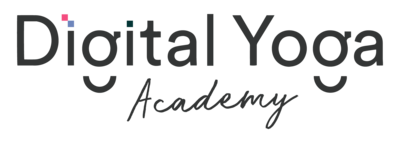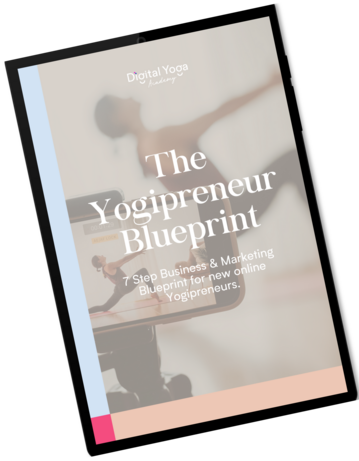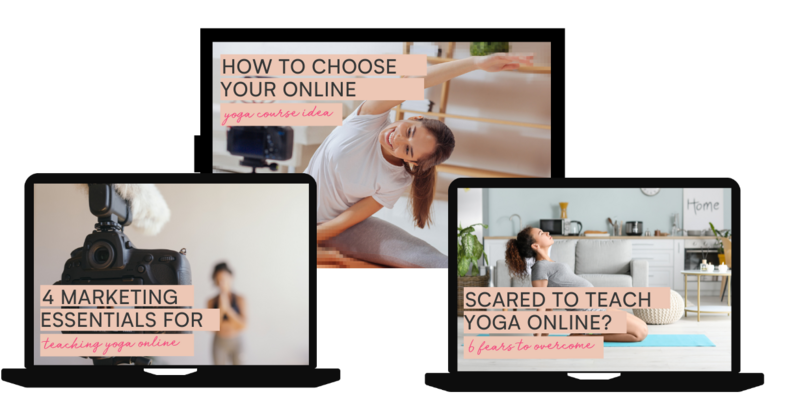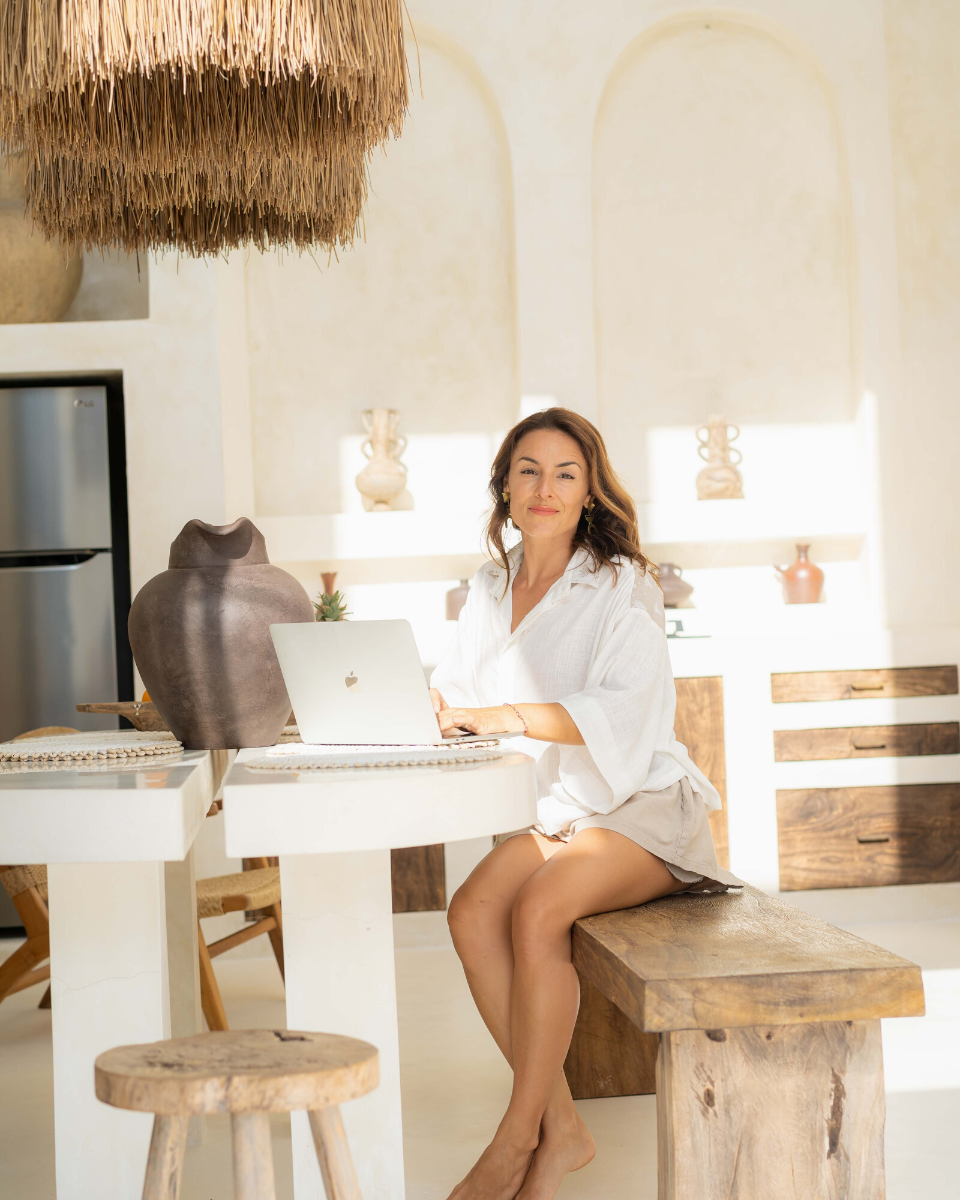Podcasting is a really effective way to connect with your listener in such an intimate way. Your listeners can hear your voice and your passion behind what you’re sharing.
The key reason why podcasting is so incredible is because you can reach an audience you would never normally have access to and that can be a game changer – as in you can make sales.
In this post we are going to dive deep into launching your very own yoga podcast with ease.
The first thing you need to know is that it is super important that you already know who your ideal student is and you know what kind of content they want from you before you launch your podcast.
When you start podcasting, you want to fully commit and be in it for the long haul. This means podcasting every single week so that your podcast becomes a way for you to build your email list and in the future a way to generate income.
Think of a Podcast as a list builder, a revenue generator, it allows you to connect with your audience in a completely new way, plus it’s a perfect way to create consistent content on a weekly basis.
An important consideration to start with is the format of your podcast.
SOME THINGS YOU COULD BE ASKING YOURSELF ARE:
- Will it just be me talking or do you plan to invite guests onto your podcast or will you do a mix of both?
- Will it be a daily podcast or a weekly podcast?
- Will you do short quick and to the point episodes of approx 10-15 minutes or will they be longer episodes around 30-60 mins?
When considering the answers to these questions, it’s a good idea to think about your ideal students. Are they listening while getting ready in the morning, commuting to work, while at the gym? Or will they need to sit down and take notes?
Once you’ve decided on your format it’s important that you stick to it for a while. Nothing is set in stone and that is the beauty of podcasting. You can change things up easily, however you want to give your format a little bit of time to see if it resonates with your audience and to really figure out what feels good for you. You want a satisfied listener but you also want to enjoy the process.
BATCHING
So, once you’ve made those decisions, you should spend some time planning your shows. One thing that makes it easy for planning your shows is batching, so instead of just working on each episode at a time, batching means you’ll work on a few episodes at the same time, so perhaps you’ll choose to batch three episodes rather than just do one.
It means when you come to recording, you’ll set up your equipment and record all three episodes, when you come onto the task of editing, you’ll be editing all three, when you move onto the task of creating copy for the website and designing graphics, you’re doing it for all three episodes – saves a lot of time!
This also means that your brain is focused on one task at a time which saves time and energy, so batching is something to consider. If you can find blocks of time in your calendar to work on a specific task such as recording, or editing, you’ll be churning out those episodes …. and saving yourself time.
WHERE TO START?
So, the best place to start is with your calendar. Mark out blocks of time in your calendar to work on the various tasks in your podcast process. If you are going to accomplish anything you will need to set aside time in your calendar to do the work.
It’s important not to think “I’ll work on my podcast later this week,” that approach is death to a podcast. If you put nothing in your calendar, do not be surprised if you only manage to get one episode out a month.You will struggle to get the downloads and listeners if you do that, rather, block out chunks in your calendar to produce your podcast episodes.
Next you want to decide what topics you will share and start planning out each episode and creating outlines. Use any research that you’ve done with your students and community to decide on topics that you’ll talk about on your podcast.
It is also a good idea to draw up a list of guests that you’ll approach – if that’s the format of your show.
As your show gets bigger and bigger you’ll have some really awesome people that will want to be on your show. But even if you’re just starting, it doesn’t hurt to ask so go ahead and ask.
Decide what you want to talk to these guests about. Prepare questions in advance so there is a nice flow to your interviews. Once you’ve decided on your topics, you want to create the outlines.
This might look like a bulleted outline with some keynotes and you’ll record from that. But basically you’re just writing some loose notes or a loose outline before you start to record.
With a clear intro of how you’re going to set up the episode, the main body of content and then close, mentioning any opt in freebies or other calls to action. This could be asking people to rate the podcast if they enjoyed it.
You also might want more than just an outline, perhaps you’ll write a script. This can provide a more polished approach and saves on the editing process.
You’ve just got to figure out what feels good to you. But once you’ve got your outlines, you’re ready to start recording.
EQUIPMENT AND SOFTWARE
This tends to be a very common question and equipment and software really don’t have to be that big of a deal. A lot of people worry whether or not they are using the right equipment, when really the biggest thing that you should be worrying about is whether the audio sounds good.
Your number one goal is that your audio needs to sound good – You just want it crisp.
If you have a computer, you are ready to go on a lot of levels. Most computers these days have built-in microphones and you’ll find if you have guests on your show, that is what they are using – they are just talking to the laptop and you’re recording from your side – It’s good enough for the interview!
As the host of the show, you should consider stepping it up at least one level and that means purchasing a Logitech USB headset which is reasonably priced and will make a huge difference. Some other options you could consider is the Blue Yeti which is pretty universal and used by many podcasters for it’s excellent sound quality. However, using the Logitech USB headset is really all you need for good audio quality.
Don’t think you’ve got to go fancy. If the equipment is slowing you down from publishing your podcast you are going about this the wrong way. You don’t have to spend tons of money in order to get a really well done, nice sounding podcast up and running.
TOP TIPS FOR RECORDING.
TIP 1 – CREATE A PRE-RECORDED INTRO IN YOUR OWN VOICE. The podcasts that have the intro in the podcaster’s voice are more personal and it makes it sound more professional. You might want to outsource the editing of your podcast but whether it’s you or someone else, the pre-recorded intro just gets dropped in to the start of the episode
If you’re going to use any music make sure it is royalty-free music. That’s so important.
TIP 2 – MESSING UP DURING YOUR RECORDING
Don’t be afraid to leave in any of your small mess ups or if you laugh – this puts across the realness and makes it feel like you’re with the host of the show.
But when something doesn’t make sense though, you stop, you pause for a momeNT, and then you pick back up. That pause will tell you or your editor, to go right to the pauses knowing you have to edit something out there.
TIP 3 – BATCHING
Batching changes everything in terms of your productivity. So the final part of this step is editing. It is a good idea to consider hiring somebody to edit your podcasts for you, it saves a lot of time – definitely worth the investment.
Outsourcing your editing allows you to work on areas of your business that will move you forward.You don’t have to spend a lot of money on editing to have somebody do a really good job.
TIP 4 – CREATING PROMOTIONAL COPY AND GRAPHICS
Before your episode goes live, you want to create the promotional copy and some graphics. You’ll need copy for the email that you’ll send out to your audience to tell them about your new show.
You’ll need copy for the show notes on your website – which is essentially a blog post that promotes the episode and links out to it and you’ll need social copy as well . So all of this copy will need to be worked on and created before the episode is published
When it comes to graphics, you want to create something so you can visually show your latest podcast episode in an email or on social media.
SOCIAL MEDIA IS WHERE IT IS AT
Social media tends to be the biggest place you will use your graphics. It’s a promo graphic that’s essentially a template so that you can change out the title and image for your podcast episode. If you have a guest it will have a picture of the guest and anything else you might want to include.
This is an important piece of the puzzle and something that doesn’t cost much at all. Getting individual images created for your blog and for social and to put in an email when you go out to promote your podcast is really important.
Now there’s a pretty cool thing called Wavve that allows you to create an image with the little squiggly lines moving that shows your audio is playing but you can also do this in Canva. You can then add a short audio clip to it and put it on social media.
Don’t discount the idea of hiring a good designer and having them create templates for you that you can change out in terms of the title and image. They always look really good so it’s definitely something to think about.
Once you’ve recorded your episode and it’s been edited and you’ve got some copy and graphics created so that you are ready to promote it, it’s time to publish your podcast.
HOSTING PLATFORMS
There are plenty of hosts you can choose from and one that you could consider using is a host called Audiobook, however there are a lot out there that you can choose from. If you are unfamiliar with the way hosts works, that’s totally normal. The way these hosts work is that they use what’s called an RSS feed to share your podcast to your website and other directories such as tines.
Once you have a host account you can upload your podcast audio and add some details such as the title and description and then submit your podcast to the various podcast directories where people listen (iTunes, Stitcher, Spotify, Google Play).
One thing to be mindful of is sticking to just Itunes. You want your podcast to reach a wide audience so sticking to one host platform will limit your exposure. Tip – make sure you upload your podcast a few days before you want it to appear in the directories as sometimes iTunes can take a day or so for your episode to be approved
PROMOTING YOUR PODCAST
Once you’ve published your podcast and it’s now live, it’s time to promote! This is where you will use your graphics to get the word out about your podcast through your social media channels and through email.
Your email is important. Let your subscribers know about your new episode and entice them with little hints about what they are going to learn in the podcast and also link to your show notes. Show notes are a very big part of publishing and promoting. Basically, you are summarising what’s in the podcast episode on a page on your website.
This can be a very abbreviated version just kind of giving your audience the highlights so that they can decide if they want to listen or not. If someone goes to your show notes and listens to the episode via your site, it gets counted as a download so that’s important.
Let’s say you did an interview with somebody. Reach out to the person and make it really easy for them to share the podcast episode – provide the link, some copy, some images, make it easy for them to share. Do the same thing every week. That’s what makes this easy and doable and consistent.
DON’T FORGET TO DO THIS EVERY WEEK
Every week post on Facebook, do an Instagram Story in the morning and then post something in the afternoon. It’s a good idea to have a plan for posting on social media when it comes to your Podcast. Once you have consistency it gets a whole lot easier!
Lastly, don’t forget to track how your podcast is doing. Your weekly and monthly listener numbers and downloads will tell you if people are paying attention and if you’re on the right track or if you possibly need to change things up.
Audioboom is a great way to track your downloads per episode. It’s a great way to see if your topic is resonating with your audience, it’s another way to gage “feedback”!







